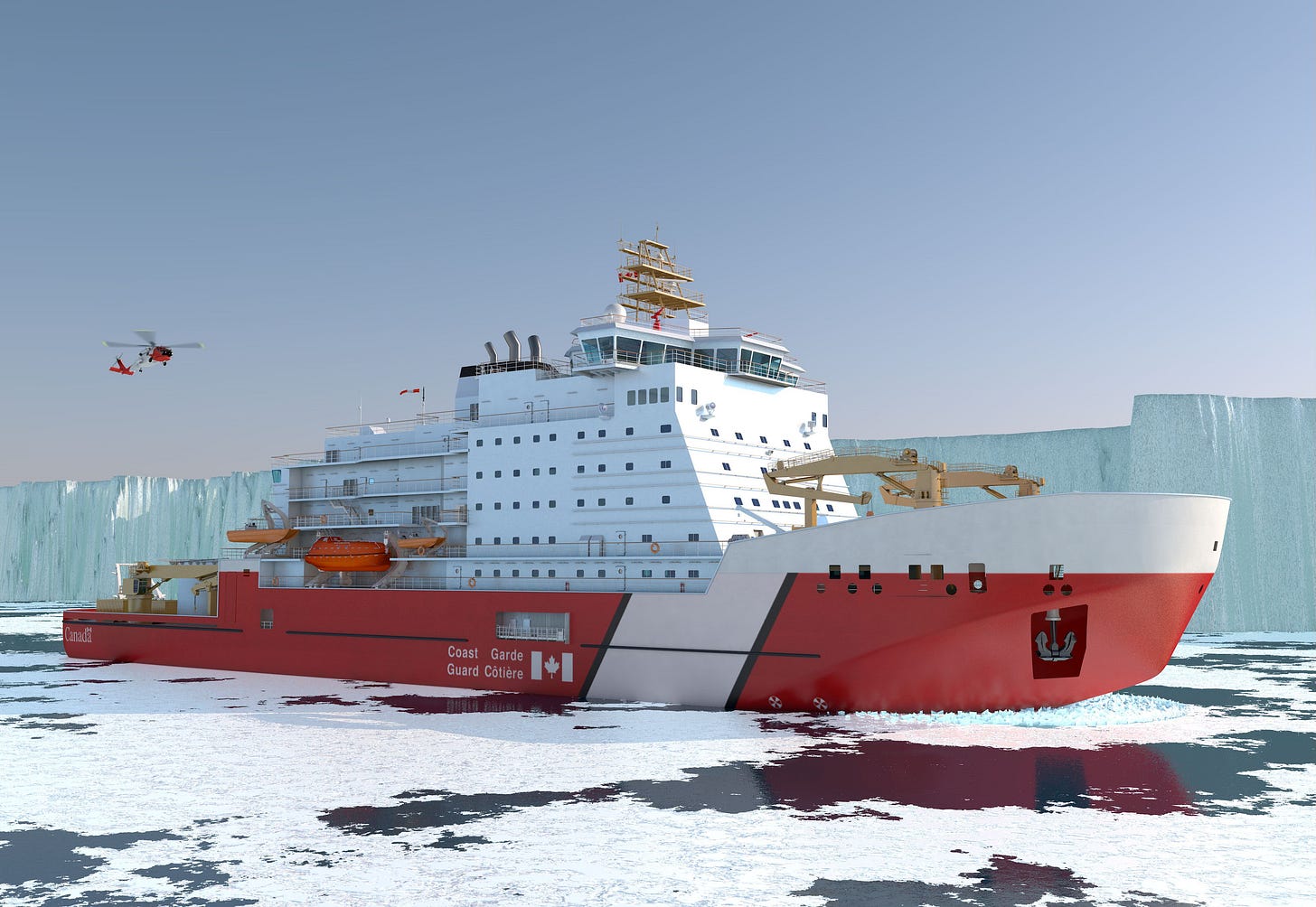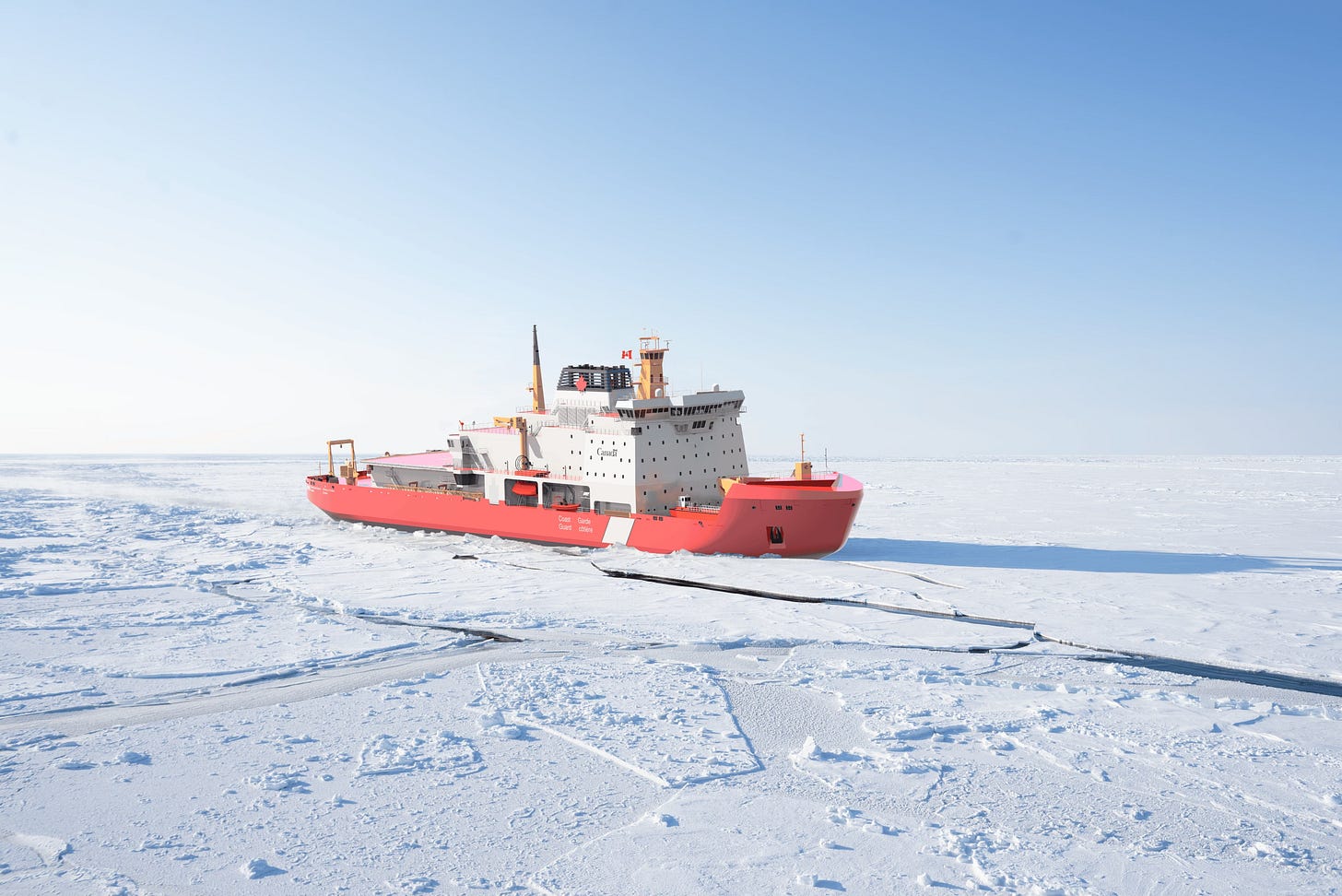True North Strong at Sea. New Icebreakers
A few details on the contracts awarded by the Government of Canada to build two heavy icebreakers.
In early March, the Government of Canada announced that two contracts were awarded to Canadian shipbuilders to build heavy icebreakers for the Canadian Coast Guard under the National Shipbuilding Strategy (NSS). The planned icebreakers are known as the Polar Max class.
This article will start a new series of texts on my Substack, which I’m calling “True North Strong at Sea.” It will cover new developments in the Royal Canadian Navy and the Canadian Coast Guard. It may be less practical, but I like the subject and I think it’s worth staying updated—especially since quite a lot is going on in this part of our defence. Don’t worry, though, I’m not dropping my regular narrative of territorial defence.
Plans to build heavy icebreakers to replace the aging CCGS Louis S. St-Laurent and CCGS Terry Fox were first announced in 2008. Both new icebreakers are projected to enter service with the Canadian Coast Guard in 2030. They will be Polar Class 2 icebreakers, with only a few vessels of this class being built worldwide. The US is buildinganother two Polar Class 2 icebreakers, and Germany is building one—all three projected to be launched in 2030 or later. The only existing PC2 vessel is a French expedition cruise ship Le Commandant Charcot.
One of the new Canadian icebreakers, named CCGS Arpatuuq, is being built at Seaspan Shipyard in Vancouver; construction started last month.
The other one, CCGS Imnaryuaq, is being built by Quebec shipbuilding company Davie, which owns the Helsinki Shipyard in Finland. To speed up the process and deliver the vessel on time, the first stage of construction will be performed in Helsinki, utilizing local icebreaker-building experience. The production will be finalized at Davie’s Quebec facility, located in Quebec City.
Canadian-Owned Helsinki Shipyard
Finland, a country with ports covered in ice for six months a year, is a world leader in icebreaker building. Helsinki Shipyard was purchased by Davie in November 2023, with assistance from the Government of Quebec. It was previously owned by a russian private company with ties to putin.
This was a brilliant move that isn’t talked about enough. Helsinki Shipyard has built almost 60% of the world’s icebreakers, but mostly for russia. Since the facility could not continue building russia’s fleet after February 2022—when russia’s unjust and unprovoked full-scale invasion of Ukraine began—the future of the shipyard became uncertain.
The acquisition of this facility by Davie not only provides much-needed capacity to fulfill Canada’s icebreaker needs, but also potentially limits russia’s access to Western icebreaker-building technologies if sanctions are ever lifted. russia actively seeks access to such technologies. This move is strategically vital for Canada, since russia is our potential adversary in the Arctic.
Davie’s Icebreaker
Helsinki Shipyard is known for its fast-paced production, with vessels built within 36 months. Even with the need to finalize production at Davie’s Quebec facility, it seems that the 2030 deadline is realistic. It’s worth noting that this contract is fixed-cost. This condition motivates the manufacturer to control costs better, since saved funds increase the company’s profitability.
Seaspan’s Icebreaker
The Vancouver Shipyard has a cost-plus contract, where the government covers all expenses. This type of contract does not incentivize the manufacturer to control costs as much as a fixed-cost contract does. Seaspan previously built a prototype block of the icebreaker to demonstrate its ability to perform the work. On April 3rd, Seaspan cut steel for the new icebreaker, marking the start of construction.
The design of both vessels was created by Aker Arctic, a world-leading icebreaker development, design, and engineering company based in Helsinki, Finland.





Helsinki Yards has a history of building excellent icebreakers. I am delighted that Canada will be reclaiming shipbuilding expertise. Too much of that expertise has migrated to China in recent years.
Very informative article. I sure appreciate your work on this platform. 🙂